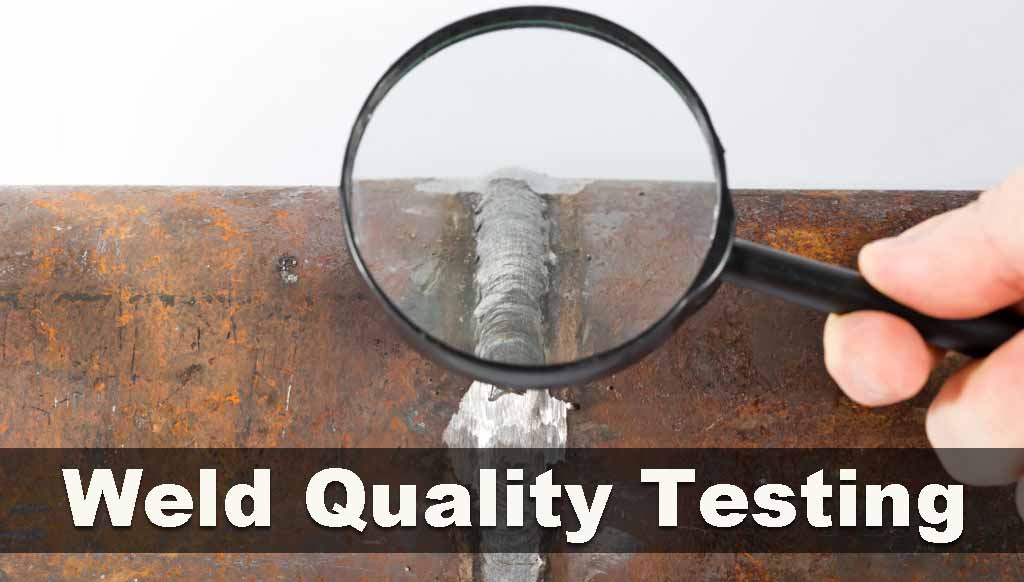A Comprehensive Guide to Welding Evaluation: Comprehending Specifications, Techniques, and Finest Practices for High Quality Guarantee
Welding evaluation plays a critical duty in guaranteeing the architectural stability and safety and security of welded parts, requiring a comprehensive understanding of sector standards such as those developed by AWS and ASME. As we explore these important aspects, it becomes apparent that the effects of welding evaluation expand far beyond conformity, welcoming a better exam of how these processes form industry criteria and practices.
Value of Welding Inspection
Welding evaluation plays a critical role in making sure the honesty and safety of welded structures. It is a necessary procedure that verifies that welds adapt predefined requirements, which is essential in various industries, including building, vehicle, and aerospace. By performing thorough evaluations, prospective flaws such as splits, insufficient blend, and porosity can be recognized early, preventing catastrophic failures that could lead to accidents or costly repair work.
The significance of welding assessment prolongs past simple compliance with policies; it likewise promotes count on with stakeholders. Clients and regulatory bodies expect assurance that the frameworks they count on are constructed to hold up against functional stresses. Efficient welding assessment practices contribute to long-term longevity and efficiency of the structures, ultimately leading to lowered upkeep costs.
Additionally, welding examination advertises a culture of top quality within organizations, encouraging adherence to ideal methods and continuous renovation. By integrating examination procedures into the welding operations, companies can boost their track record and establish themselves as leaders in top quality assurance. In verdict, the relevance of welding evaluation hinges on its capability to guard lives, make sure architectural dependability, and support market criteria, making it a crucial aspect of welding procedures.
Key Market Specifications
Guaranteeing conformity with essential sector standards is crucial for keeping the quality and safety of bonded frameworks. Various organizations develop these standards to promote ideal methods in welding and inspection - Welding Inspection Gilbert Arizona. Among one of the most identified are the American Welding Society (AWS) and the American Society of Mechanical Designers (ASME), which give detailed standards and requirements for welding processes and evaluation requirements
AWS criteria, such as AWS D1.1 for architectural welding, overview demands for products, layout, and screening to ensure the stability of welds. ASME codes, consisting of ASME Area IX, control the qualification of welders and welding treatments, making certain constant high quality in commercial applications. Globally, the ISO 3834 typical stresses quality requirements for combination welding, offering a framework for organizations to demonstrate compliance with global best practices.
Conformity with these criteria not just boosts the dependability of bonded structures but also mitigates risks related to architectural failings. Adherence to industry criteria is usually a requirement for regulative approvals and can considerably affect task specs. Ultimately, understanding and applying these vital criteria are necessary for efficient welding inspection and top quality guarantee.
Inspection Techniques Review
Reliable welding evaluation relies upon a variety of strategies created to assess the top quality and integrity of welds. These strategies can be extensively classified into devastating and non-destructive testing (NDT) approaches. Non-destructive screening strategies, which are commonly chosen in the market, permit the examination of welds without compromising the stability of the product.

Among the most commonly used NDT techniques are visual evaluation, ultrasonic testing, radiographic testing, and magnetic particle testing. Aesthetic inspection is frequently the first the original source step in the assessment process, enabling inspectors to determine surface area blemishes and analyze weld grain accounts.
Each method has its own advantages and limitations, making it important for examiners to choose the most appropriate approach based upon the certain demands of the task, the products entailed, and the criticality of the welds being inspected. This mindful option maintains browse around this web-site and makes sure extensive assessments safety and security and high quality requirements in welding procedures.
Typical Problems and Their Implications
A comprehensive understanding of common issues in welds is vital for preserving architectural integrity and safety and security in welded constructions. Welding flaws can substantially compromise the mechanical homes of the joint, leading to failures that can endanger both employees and devices.
Usual problems consist of porosity, which materializes as small gas pockets trapped in the weld metal, weakening the general framework. Splitting is another common issue, frequently arising from rapid cooling or inappropriate joint design, bring about tension focus that can result in catastrophic failures. Insufficient fusion happens when the weld steel fails to correctly bond with the base material, developing weak points that may cause splitting up under load.
Various other remarkable defects include damaging, where the weld bead erodes the base metal, and slag additions, which can hinder the weld's toughness. Each of these flaws has particular ramifications; for example, porosity can decrease ductility, while fracturing straight impacts tensile stamina. Identifying and recognizing these defects during evaluation is necessary for ensuring and implementing corrective measures compliance with market criteria, eventually securing the architectural stability of bonded settings up.
Finest Practices for Quality Control
Executing ideal techniques for top quality guarantee in welding procedures is vital for accomplishing ideal outcomes and reducing defects. One critical technique is the establishment of clear welding treatments that stick to market criteria and specifications. These procedures need to consist of in-depth directions concerning material option, joint prep work, and welding strategies to make certain consistency and quality.
Normal training and qualification of welding workers are also essential. Competent welders that comprehend the importance of quality control are much more most likely to create sound welds. Additionally, executing a durable assessment program, including both aesthetic and non-destructive screening (NDT), can help recognize flaws early at the same time, permitting timely corrective actions.

Lastly, fostering a culture of high quality within the company motivates staff members to focus on top quality in their work. By adhering to these best methods, organizations can improve the stability of their welding procedures, inevitably bring about improved product quality and decreased costs connected with rework and repair work.

Conclusion
In final thought, welding inspection plays a vital duty in guaranteeing the integrity and safety and security of bonded structures. By applying finest practices, companies can improve reliability, decrease maintenance prices, and cultivate trust amongst clients, inevitably contributing to effective welding operations.
Additionally, welding examination promotes a society of quality within organizations, urging adherence to best methods and continuous enhancement. In verdict, the significance of welding inspection lies in its capability to guard lives, ensure structural integrity, and copyright market criteria, making it an important facet of welding operations.
Among the most identified are the American Welding Society (AWS) and the American Culture of Mechanical Designers (ASME), which provide comprehensive standards and requirements for welding procedures and inspection standards.
Inevitably, understanding and implementing these vital requirements are necessary for efficient welding assessment and top quality assurance.
Effective welding evaluation counts on a selection of strategies designed to assess the quality and integrity of welds.